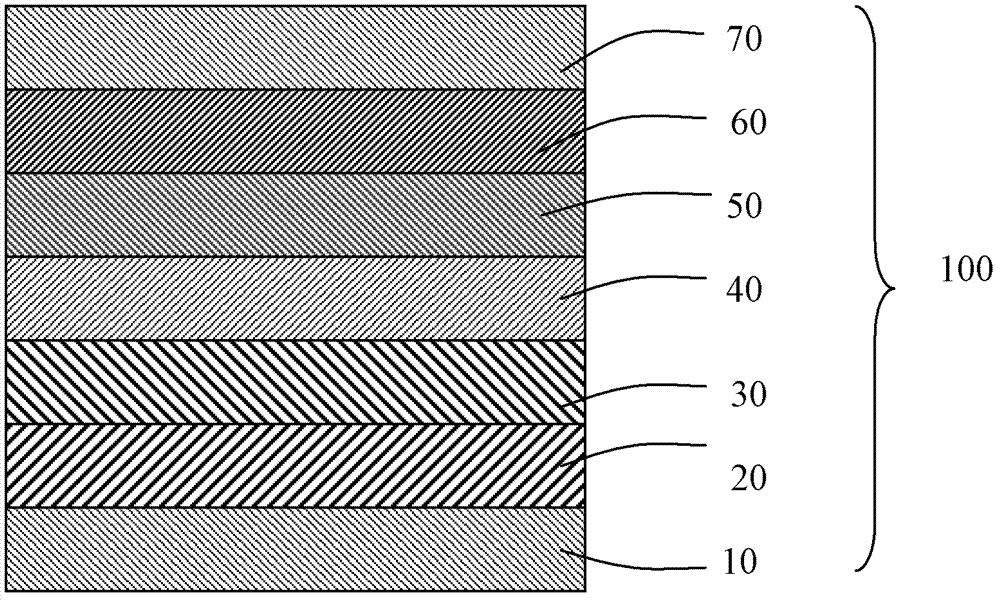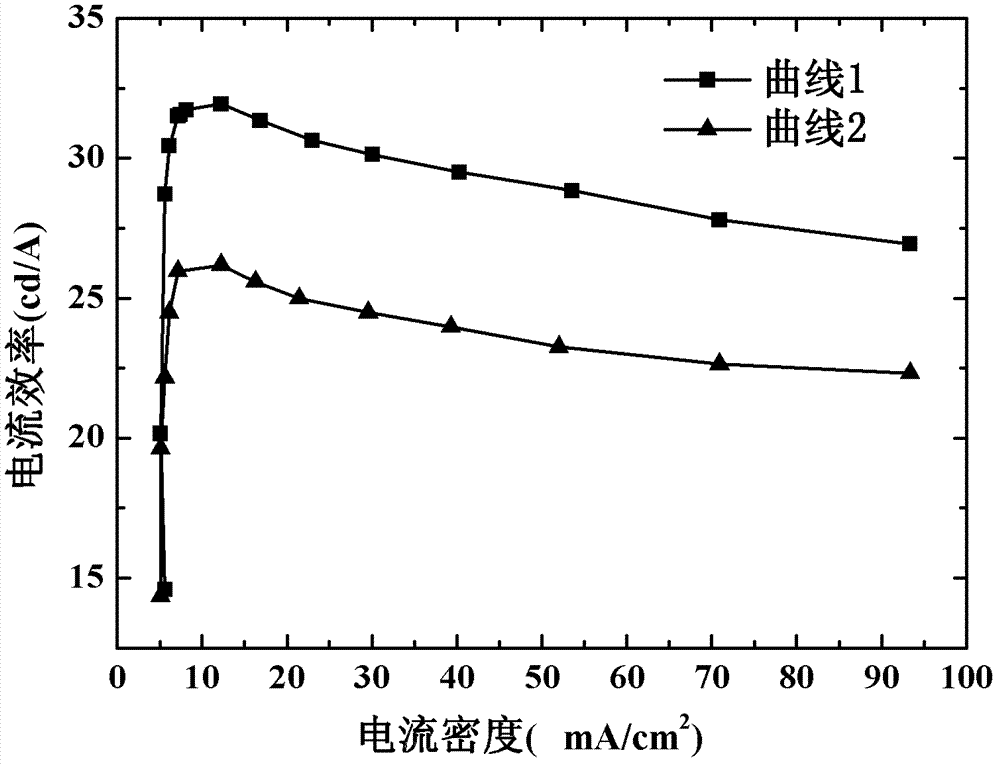Bottom-emitting organic electroluminescence device and preparation method thereof
A technology of electroluminescence and bottom emission, which is applied in the fields of electric solid-state devices, semiconductor/solid-state device manufacturing, electrical components, etc., and can solve the problems of complex process, affecting luminous efficiency, and poor control of doping ratio.
- Summary
- Abstract
- Description
- Claims
- Application Information
AI Technical Summary
Problems solved by technology
Method used
Image
Examples
preparation example Construction
[0034] A method for preparing an organic electroluminescent device 100 according to an embodiment includes the following steps:
[0035] Step S110 , performing pretreatment on the conductive anode substrate 10 .
[0036]The conductive anode substrate 10 is preferably indium tin oxide glass (ITO), fluorine doped tin oxide glass (FTO), aluminum doped zinc oxide glass (AZO) or indium doped zinc oxide glass (IZO). Specifically, the anode conductive substrate 10 can be photolithographically processed first, cut into the required size, and then ultrasonicated for 15 minutes with detergent, deionized water, acetone, ethanol, and isopropanol in order to remove organic pollution on the glass surface Objects; after cleaning, carry out suitable treatment on the conductive substrate, such as: oxygen plasma treatment or UV-ozone treatment. The oxygen plasma treatment time is 5-15 minutes, and the power is 10-50 W; the UV-ozone treatment time is 5-20 minutes.
[0037] Step S120 , sequenti...
Embodiment 1
[0048] Example 1: First, carry out photolithography treatment on ITO, cut it into the required size, and then use detergent, deionized water, acetone, ethanol, and isopropanol to sonicate for 15 minutes each to remove organic pollutants on the glass surface; clean it up Carry out oxygen plasma treatment afterward, treatment time is 5min, and power is 35W, then vapor-deposits hole injection layer (MoO 3 ), hole transport layer (NPB), electron blocking layer (TAPC); 3 ); and then the electron beam prepares the sulfide layer, the material is ZnS, the thickness is 80nm, and finally the cathode is evaporated, the material is Ag, the thickness is 100nm, and finally the required organic electroluminescent device is obtained.
[0049] attached figure 2 The device structure of embodiment 1 is: ITO / MoO 3 / NPB / TAPC / Alq 3 / ZnS / Ag vs. voltage for conventional devices. Wherein, curve 1 is the result of embodiment 1, and curve 2 is the result of comparative example.
[0050] From fig...
Embodiment 2
[0051] Example 2: First, carry out photolithography treatment on FTO, cut it into the required size, and then use detergent, deionized water, acetone, ethanol, and isopropanol to sonicate for 15 minutes each to remove organic pollutants on the glass surface; clean it Carry out oxygen plasma treatment afterward, treatment time is 10min, power is 20W; Evaporate hole injection layer (WO 3 ), the hole transport layer (TCTA), the electron blocking layer (TPD); then evaporate the luminescent layer, the material is TCTA:FIrpic, the doping ratio is 20%, and the thickness is 20nm); then the electron beam prepares the sulfide layer, the material The material is CdS with a thickness of 10nm, and finally the cathode is evaporated, and the material is Al with a thickness of 100nm, and finally the required organic electroluminescent device is obtained.
PUM
 Login to View More
Login to View More Abstract
Description
Claims
Application Information
 Login to View More
Login to View More - R&D
- Intellectual Property
- Life Sciences
- Materials
- Tech Scout
- Unparalleled Data Quality
- Higher Quality Content
- 60% Fewer Hallucinations
Browse by: Latest US Patents, China's latest patents, Technical Efficacy Thesaurus, Application Domain, Technology Topic, Popular Technical Reports.
© 2025 PatSnap. All rights reserved.Legal|Privacy policy|Modern Slavery Act Transparency Statement|Sitemap|About US| Contact US: help@patsnap.com


